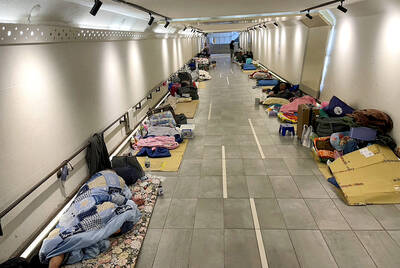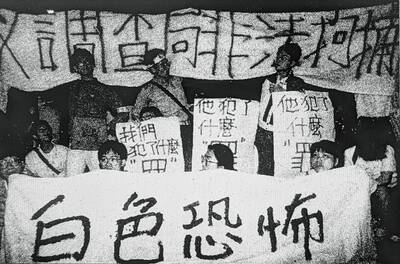Practically all the half million raccoons which infest the forests and parks of Central Europe are believed to descend from just four animals released in the woods near the German city of Kassel in the Nazi period.
Raccoons have never had a good press in Europe. Not only are they North American interlopers, there is also a persistent story that they were introduced to provide hunting pleasure for Marshal Hermann Goering, the head of Adolf Hitler’s Luftwaffe.
But a recent examination of the files, 75 years later, shows that the Nazi part of the story, which appears in many textbooks, is untrue.
Goering did not even know about the raccoons’ release, and the authorities in Berlin tried to stop their acclimatization.
But it was too late. Rangers at Lake Eder in Germany had already freed two breeding pairs on April 12, 1934. Not without difficulty either: the cautious animals would not initially come out from their box, despite being offered some eggs and dead squirrels.
But the hills around Kassel were to provide the freed raccoons with the perfect environment: lots of woods, rivers and food. The mammals grow up to 70cm in length and usually feed at night.
It is estimated a couple of dozen breeding pairs were established by 1945. Another 25 years on, there were 20,000. And the cute critters with the burglar-style black markings round the eyes kept on multiplying.
Kassel remains the capital city of raccoon expansionism in Europe.
“Round here, just about everyone’s garden has a raccoon living in it in summer-time,” said biologist Frank-Uwe Michler in the city. Genetic studies show that raccoons in Hamburg and Bavaria also descend from the same two Lake Eder pairs.
SKINS AND MEAT
Horst Marohn, of the state of Hesse forestry authority, says, “All the books claim that Goering personally ordered this rather foolhardy disturbance of our fauna.” But Marohn and senior ranger Eberhard Leicht checked the official files and found a different story.
As supervisor of hunting in the Voehl and Lake Eder areas, Leicht is the modern successor of the rangers who not only freed the raccoons but documented the whole matter in correspondence.
“It wasn’t just someone opening a cage to see what happened. It all had to be officially reviewed, even back then,” Leicht said. The proposal had apparently come from fur merchants, who suggested the animals would provide both skins and meat.
However Kassel had a particularly bureaucratic government, since it was part of the state of Prussia, and everything had to be approved in the capital, Berlin, by the office of Prussia’s master of the hunt.
BUREAUCRATIC INERTIA
Two of the Third Reich’s most senior animal-biology officials promptly objected.
One was Carl Hagenbeck, a zoologist whose family conducted one of Germany’s most famous zoos in Hamburg.Hagenbeck said he knew of a raccoon that had escaped in the city and constantly gobbled up city-dwelling pets including ducks and guinea pigs.
The other was Lutz Heck who ran the Berlin Zoo and who said releasing raccoons was not a good idea. The office of the Prussian master of the hunt vacillated for months before sending a veto to Kassel.
“But by that time, it was too late,” said Leicht. “A predecessor of mine, Baron Wilhelm Sittich von Berlepsch, had let the raccoons out.” The females were gestating and the foresters apparently thought it was best for the young to be born in the wild.
“It is true that Hermann Goering was in charge of the hunt office, but I am pretty sure he knew nothing about it,” said Leicht.
The name of the Nazi, who was a keen hunter, does not appear on any of the documents about the case.
Of course the facts have never stood in the way of a good story. Decades later, reports appeared in the British press that wryly described the animals as the “Nazi raccoons” and many Germans today see the release as another Nazi misdeed.
Heck’s and Hagenbeck’s concerns turned out to be right. Raccoons have become a pest in quite a few locations in Europe.
Leicht suggests raccoons are not all that bad though.
“Of course they can’t resist an egg if they find it. But they are not particularly talented predators, they can’t climb trees very well and often they are really quite clumsy. They are more gatherers than hunters. And it’s not true they were the Nazis’ pet,” he said.

From the last quarter of 2001, research shows that real housing prices nearly tripled (before a 2012 law to enforce housing price registration, researchers tracked a few large real estate firms to estimate housing price behavior). Incomes have not kept pace, though this has not yet led to defaults. Instead, an increasing chunk of household income goes to mortgage payments. This suggests that even if incomes grow, the mortgage squeeze will still make voters feel like their paychecks won’t stretch to cover expenses. The housing price rises in the last two decades are now driving higher rents. The rental market

July 21 to July 27 If the “Taiwan Independence Association” (TIA) incident had happened four years earlier, it probably wouldn’t have caused much of an uproar. But the arrest of four young suspected independence activists in the early hours of May 9, 1991, sparked outrage, with many denouncing it as a return to the White Terror — a time when anyone could be detained for suspected seditious activity. Not only had martial law been lifted in 1987, just days earlier on May 1, the government had abolished the Temporary Provisions Effective During the Period of National Mobilization for Suppression of the Communist

When life gives you trees, make paper. That was one of the first thoughts to cross my mind as I explored what’s now called Chung Hsing Cultural and Creative Park (中興文化創意園區, CHCCP) in Yilan County’s Wujie Township (五結). Northeast Taiwan boasts an abundance of forest resources. Yilan County is home to both Taipingshan National Forest Recreation Area (太平山國家森林遊樂區) — by far the largest reserve of its kind in the country — and Makauy Ecological Park (馬告生態園區, see “Towering trees and a tranquil lake” in the May 13, 2022 edition of this newspaper). So it was inevitable that industrial-scale paper making would

Hualien lawmaker Fu Kun-chi (傅?萁) is the prime target of the recall campaigns. They want to bring him and everything he represents crashing down. This is an existential test for Fu and a critical symbolic test for the campaigners. It is also a crucial test for both the Chinese Nationalist Party (KMT) and a personal one for party Chairman Eric Chu (朱立倫). Why is Fu such a lightning rod? LOCAL LORD At the dawn of the 2020s, Fu, running as an independent candidate, beat incumbent Democratic Progressive Party (DPP) lawmaker Hsiao Bi-khim (蕭美琴) and a KMT candidate to return to the legislature representing